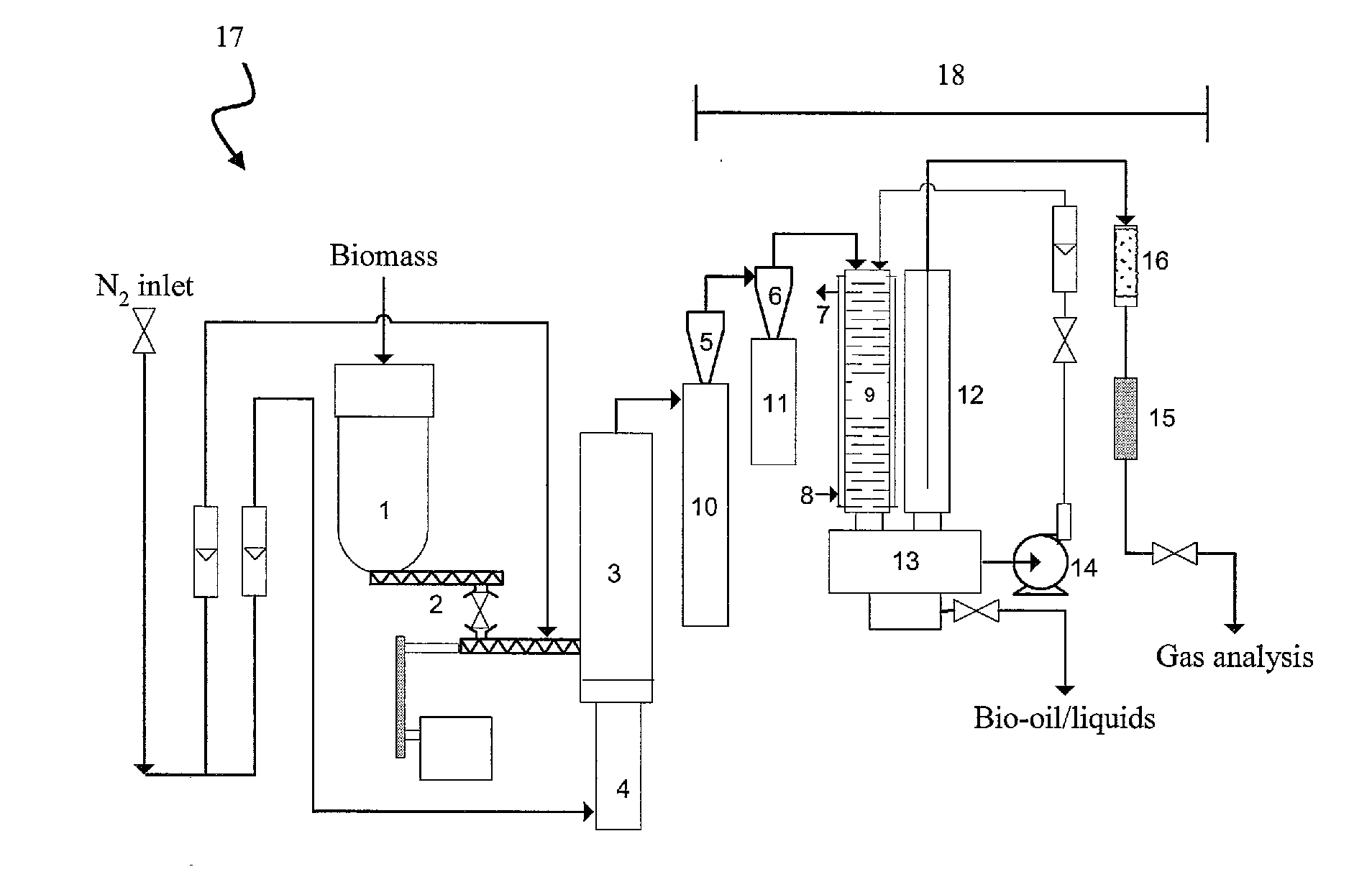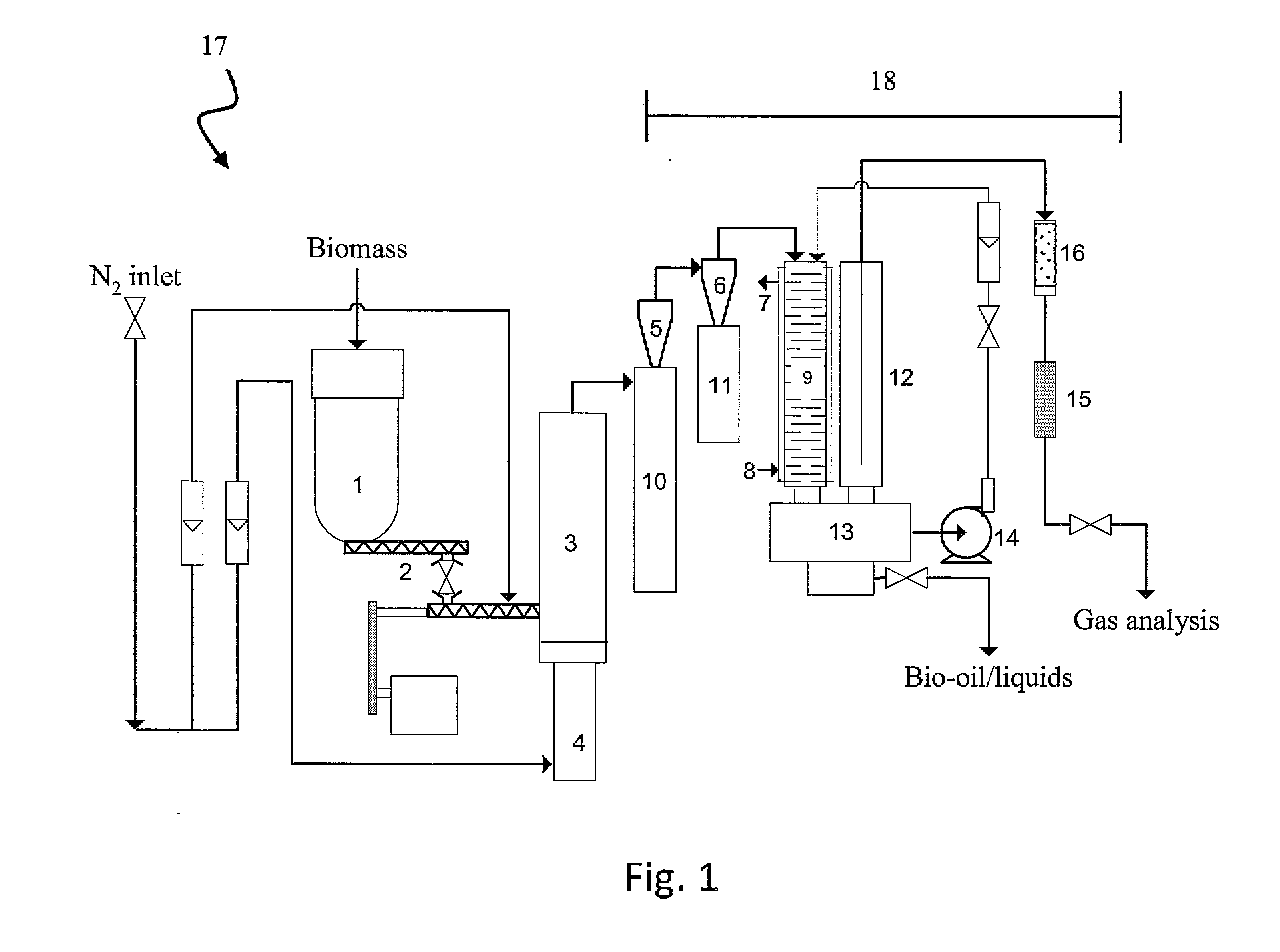Biomass pyrolysis
a biomass and pyrolysis technology, applied in the field of biomass pyrolysis, can solve the problems of loss of reactivity of organic phase, undesirable phase separation, and the tendency of bio-oil from the pyrolysis reactor to suffer from phase separation, so as to reduce the concentration of reactive compounds, reduce the rate of reaction, and reduce the effect of reaction ra
- Summary
- Abstract
- Description
- Claims
- Application Information
AI Technical Summary
Benefits of technology
Problems solved by technology
Method used
Image
Examples
examples
[0058]Bark with an ash content of 13 wt % (dry basis) was fed into a fluidised bed fast pyrolysis reactor with a nominal capacity of 1 kg / h. The feedstock was pyrolysed in the reactor at 500° C. and a phase separated oil was obtained after removal of the quench liquid from the pyrolysis product. The average molecular weight of the organics dominated phase was 696 g / mol. The water content of this phase was 3 wt %, with a pH of 3.5. The organic yield was 42%.
[0059]Using the same bark and a fluidised bed fast pyrolysis system with a nominal capacity of 150 g / h and a simple condenser, the feedstock was pyrolysed at 570° C. and a phase separated oil was obtained after condensation. The average molecular weight of the organics dominated phase was 467 g / mol. The water content of the phase was 10 wt %, with a pH of 3.8. The organic yield was 40%. After storage for a year, ethanol was added to the phase separated oil. A single phase oil was obtained when the ethanol content reached approxima...
PUM
| Property | Measurement | Unit |
|---|---|---|
| temperature | aaaaa | aaaaa |
| temperatures | aaaaa | aaaaa |
| phase separation | aaaaa | aaaaa |
Abstract
Description
Claims
Application Information
 Login to View More
Login to View More - R&D
- Intellectual Property
- Life Sciences
- Materials
- Tech Scout
- Unparalleled Data Quality
- Higher Quality Content
- 60% Fewer Hallucinations
Browse by: Latest US Patents, China's latest patents, Technical Efficacy Thesaurus, Application Domain, Technology Topic, Popular Technical Reports.
© 2025 PatSnap. All rights reserved.Legal|Privacy policy|Modern Slavery Act Transparency Statement|Sitemap|About US| Contact US: help@patsnap.com


